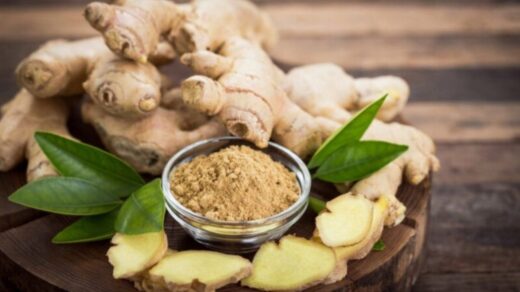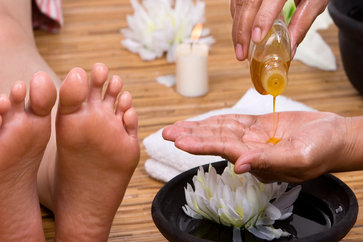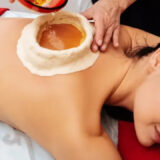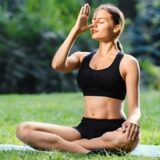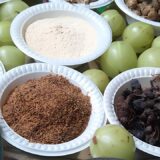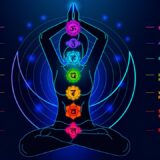Marma Massage: An Ayurvedic Approach to Whole-Body Wellness
Marma massage is a deeply therapeutic and holistic approach that delves into the subtle energy pathways of the body. By addressing imbalances at the Marma points, it can promote physical, mental, and emotional well-being. This ancient healing technique has been practiced for centuries and continues to be valued for its profound effects on overall health and vitality.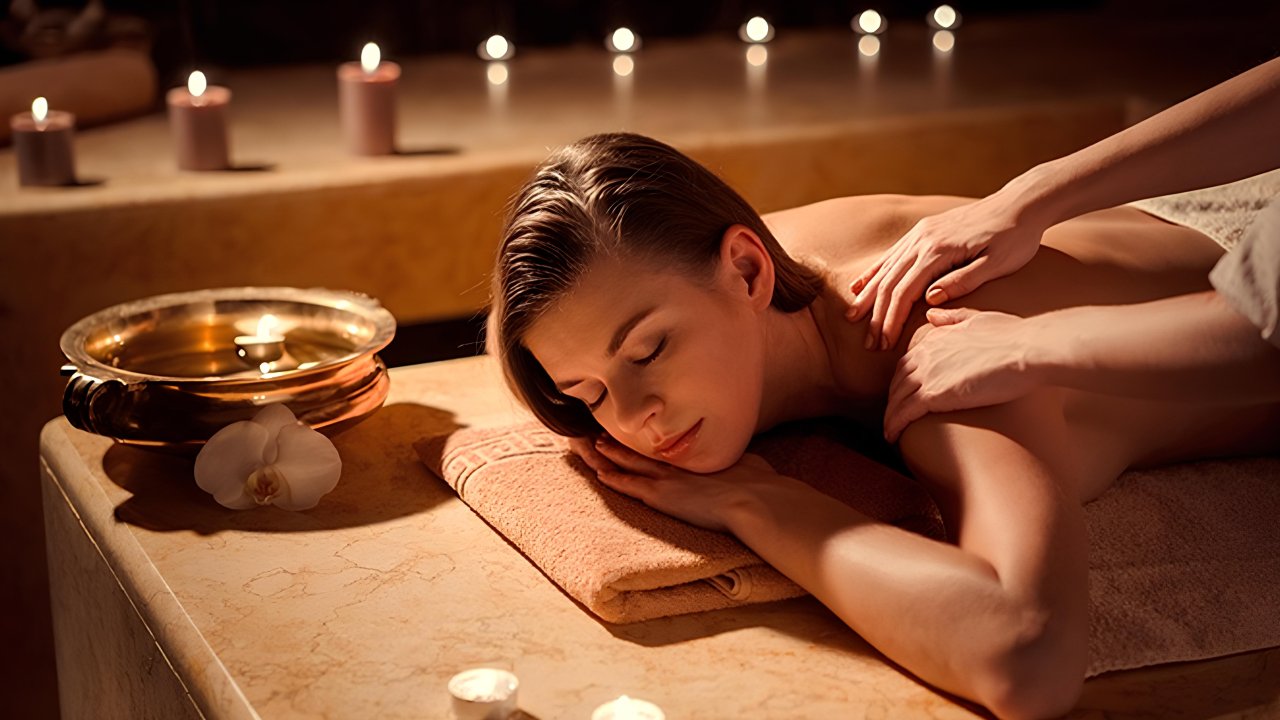
Marma therapy is often combined with other Ayurvedic treatments for enhanced results. It can be incorporated into an overall wellness program to support detoxification, rejuvenation, and spiritual growth.
Importance of Marma Points in Ayurveda
In Ayurveda, Marma points are considered the gateways to the body’s life force, or prana. They are intricately linked to various organs, tissues, and physiological functions. By working with these points, practitioners can:
- Balance the doshas: The three primary energies (Vata, Pitta, and Kapha) can be harmonized through Marma therapy.
- Improve circulation: Stimulating Marma points can enhance blood flow and lymphatic drainage.
- Relieve pain: Many Marma points are associated with pain relief and relaxation.
- Boost immunity: Marma therapy can strengthen the body’s natural defenses.
Promote overall well-being: By balancing the energy system, Marma massage can enhance physical, mental, and emotional health.
Marma Points: What are they?
Marma points are considered the life force junctions within the human body according to Ayurvedic medicine.
These specific points are believed to be intersections of the body’s energy channels, or nadis.
There are 107 primary Marma points located throughout the body, each with its unique properties and therapeutic benefits.
Key characteristics of Marma points include:
- Vital energy concentration: Marma points are believed to hold a high concentration of prana, the vital life force energy.
- Intersection of physical and subtle bodies: They are seen as the connection between the physical body and the subtle energy body.
- Therapeutic potential: Stimulating these points through massage, pressure, or other techniques can promote healing and balance.
- Classification: Marma points are classified based on their size, location, sensitivity, and the types of tissues they encompass.
By carefully working with Marma points, skilled practitioners can address a wide range of physical and mental imbalances, promoting overall well-being and vitality.
Definition of Marma Points
Marma points are specific anatomical locations on the human body where vital energies, or prana, are concentrated.
These points are considered junctions of different tissues, such as muscles, ligaments, bones, blood vessels, and nerves.
In Ayurvedic medicine, Marmas are believed to be the gateways to the body’s life force and are crucial for maintaining overall health and well-being.
The Significance of Marma Points in the Human Body
Marma points hold immense importance in the human body due to their connection to the intricate network of energy channels known as nadis. These points are believed to:
- Regulate vital functions: Marmas are associated with various physiological processes, including respiration, digestion, circulation, and nervous system activity.
- Balance the doshas: By stimulating specific Marma points, it is possible to harmonize the three primary energies (Vata, Pitta, and Kapha) in the body.
- Promote healing: Marma therapy is used to treat a wide range of physical and mental ailments by restoring balance to the energy system.
- Enhance vitality: Regular stimulation of Marma points can boost energy levels, improve circulation, and promote overall vitality.
Categories of Marma Points
Marma points are classified into three primary categories based on their depth, size, and sensitivity:
- Sthula Marma (Gross Marma): These are the most prominent and easily palpable Marma points. They are located on the surface of the body and have a larger size.
- Madhya Marma (Medium Marma): These Marma points are located at a deeper level than Sthula Marma and are slightly smaller in size. They require more precise application of pressure.
- Sukshma Marma (Subtle Marma): These are the most delicate and sensitive Marma points, located deep within the body. They are difficult to locate and require expert knowledge for manipulation.
Understanding these categories is essential for administering Marma therapy effectively, as different techniques and pressures are applied to each type of Marma point.
The Philosophy Behind Marma Massage
Marma massage is rooted in the belief that vital energy flows through specific body points. By manipulating these points, it aims to restore balance and promote holistic well-being.
Connection Between Marma Points and Energy Flow (Prana)
At the core of Marma therapy lies the belief in the vital life force, or Prana. This subtle energy is believed to flow through the body along specific channels known as nadis.
Marma points are considered intersections or junctions of these nadis, where Prana accumulates and is particularly potent. By manipulating these points, practitioners aim to:
- Unblock energy flow: Remove obstacles that hinder the smooth circulation of Prana.
- Enhance energy distribution: Optimize the delivery of Prana to all parts of the body.
- Strengthen the body’s energy field: Build resilience and vitality.
Role of Marma Massage in Balancing the Doshas (Vata, Pitta, Kapha)
Ayurveda posits that health is maintained through the balance of three fundamental energies or doshas: Vata, Pitta, and Kapha.
Marma massage is a powerful tool for harmonizing these doshas. By stimulating specific Marma points, practitioners can:
- Pacify aggravated doshas: Reduce the intensity of imbalanced doshas.
- Increase deficient doshas: Strengthen weak or underactive doshas.
- Promote equilibrium: Restore the natural balance among the three doshas.
The Therapeutic Principles of Marma Therapy
Marma therapy is guided by several key principles:
- Holistic approach: Addresses the physical, mental, and spiritual aspects of well-being.
- Individualized treatment: Tailors therapy to the specific needs of each individual based on their constitution (Prakriti) and imbalances.
- Gentle and effective: Emphasizes gentle pressure and manipulation to avoid injury.
- Preventive care: Promotes health maintenance and disease prevention.
- Self-healing: Encourages the body’s innate ability to heal and restore balance.
By understanding these philosophical underpinnings, one can appreciate the depth and complexity of Marma massage. It’s a therapeutic modality that offers a profound and holistic approach to wellness.
Benefits of Marma Massage
Marma massage offers physical benefits like pain relief and improved circulation, while also promoting mental and emotional well-being through stress reduction and enhanced clarity.
Physical Benefits
Marma massage offers a plethora of physical benefits due to its targeted approach to vital energy points. Some of the most notable physical benefits include:
- Pain relief: By releasing muscular tension and improving circulation, Marma massage can alleviate various types of pain, including headaches, back pain, and joint pain.
- Improved circulation: Stimulating Marma points helps to enhance blood flow, delivering essential nutrients and oxygen to tissues and organs.
- Enhanced flexibility: Regular Marma massage can improve joint mobility and flexibility, reducing stiffness and soreness.
- Boosted immune system: By promoting overall well-being, Marma massage can strengthen the body’s natural defenses.
- Detoxification: The massage helps in eliminating toxins from the body, promoting a healthier internal environment.
Mental and Emotional Benefits
Beyond its physical advantages, Marma massage also profoundly impacts mental and emotional well-being:
- Stress reduction: The gentle and rhythmic movements of Marma massage induce relaxation, calming the mind, and reducing stress and anxiety.
- Improved sleep: By promoting relaxation and balancing the nervous system, Marma massage can enhance sleep quality.
- Enhanced mental clarity: Regular sessions can improve focus, concentration, and mental clarity.
- Emotional balance: Marma massage helps to regulate emotions, reducing mood swings and promoting emotional stability.
Overall Health Benefits
The combined effects of physical and mental well-being contribute to a significant improvement in overall health:
- Increased vitality: Regular Marma massage can boost energy levels and create a sense of vitality.
- Improved digestion: By stimulating the digestive system’s Marma points, it can aid in digestion and absorption of nutrients.
- Balanced doshas: Marma massage helps to harmonize the three doshas (Vata, Pitta, and Kapha), promoting overall equilibrium.
- Enhanced self-awareness: Regular sessions can deepen self-awareness and connection to the body.
Techniques and Practices of Marma Massage
Marma massage involves precise pressure application to specific points. Combining various techniques like circular motions and vibrations enhances relaxation and energy flow.
Preparing for a Marma Massage Session
To create an optimal environment for a Marma massage, the following preparations are essential:
- Client consultation: Understanding the client’s health history, dosha imbalance, and desired outcomes is crucial for tailoring the massage accordingly.
- Space preparation: A quiet, warm, and dimly lit room promotes relaxation. Soft music and gentle aromatherapy can enhance the experience.
- Therapist preparation: The therapist should be grounded, centered, and free from distractions.
Setting the Environment
Creating the right atmosphere is essential for a successful Marma massage:
- Dim lighting: Soft, indirect lighting helps to create a calming ambiance.
- Aromatherapy: The use of essential oils can enhance relaxation and balance the doshas.
- Soft music: Gentle, soothing music can promote a state of tranquility.
- Comfortable surroundings: A warm, clean, and inviting space is crucial for client comfort.
Oils and Tools Used
The choice of oil depends on the client’s dosha and the specific therapeutic goals:
- Sesame oil: Commonly used for its balancing properties.
- Coconut oil: Offers nourishing and moisturizing benefits.
- Almond oil: Known for its soothing and calming effects.
- Other oils: Specific oils can be chosen based on their therapeutic properties.
Additional tools may include:
- Warm compresses: To relax muscles and open pores.
- Herbal pouches: Containing specific herbs for targeted healing.
Step-by-Step Guide to Performing a Basic Marma Massage
While a comprehensive Marma massage involves numerous points, a basic session can focus on key areas:
- Preparation: The client lies comfortably on a massage table. Warm oil is applied to the hands.
- General massage: Begin with a gentle full-body massage to relax the muscles and prepare the body.
- Marma point stimulation: Apply gentle pressure, circular motions, or vibrations to specific Marma points. The duration and intensity vary depending on the point and the client’s needs.
- Energy balancing: Focus on harmonizing the doshas by stimulating corresponding Marma points.
- Completion: End the massage with a gentle full-body stroke and a few moments of silence for integration.
Key Points to Focus On
- Location: Precise identification of Marma points is essential.
- Pressure: The amount of pressure applied varies depending on the point and the client’s sensitivity.
- Rhythm: Consistent and rhythmic movements promote relaxation.
- Intention: The therapist should maintain a clear and focused mind during the massage.
Techniques
Various techniques can be employed in Marma massage:
- Pressure: Applying steady pressure to Marma points can release tension and stimulate energy flow.
- Circular motions: Gentle circular movements can help to relax muscles and improve circulation.
- Vibrations: Rapid, gentle vibrations can be used to awaken the senses and stimulate energy.
- Stretching: Incorporating gentle stretching can increase flexibility and range of motion.
Marma Massage for Specific Conditions
Marma massage is a versatile therapy that can address a wide range of health concerns. Marma massage can alleviate headaches, back pain, and anxiety. Targeting specific points helps balance the body and promotes healing.
Marma Points for Relieving Headaches and Migraines
- Headaches and migraines often stem from imbalances in Vata and Pitta doshas. Targeting specific Marma points can help alleviate pain and discomfort:
Key Marma points: Brahmi, Shanku, Utkshepaka, and Shankha.
- Techniques: Gentle pressure, circular motions, and cooling compresses.
- Additional tips: Combining Marma massage with aromatherapy using oils like lavender or peppermint can enhance relief.
Techniques for Easing Back Pain and Muscle Tension
Back pain and muscle tension are common complaints that Marma massage can effectively address:
- Key Marma points: Kshipra, Gandhara, Apana, and Asthi.
- Techniques: Deep tissue massage, stretching, and warm compresses.
- Additional tips: Incorporate yoga poses that target the back muscles to complement the massage.
Using Marma Massage for Anxiety and Stress Management
Marma massage can be a powerful tool for calming the mind and reducing stress:
- Key Marma points: Hridaya, Nabhi, and Sthapani.
- Techniques: Gentle, rhythmic strokes, and breath synchronization.
- Additional tips: Combine Marma massage with meditation or deep breathing exercises for optimal results.
Remember: While Marma massage offers significant benefits, it’s essential to consult with a qualified Ayurvedic practitioner for personalized guidance and treatment plans.
Integrating Marma Massage into Daily Routine
Self-Massage Techniques
While professional Marma massage offers profound benefits, incorporating self-massage techniques into your daily routine can significantly enhance your well-being. Here are some tips:
- Focus on accessible points: Begin with Marma points that are easily reachable, such as those on the hands, feet, and head.
- Use gentle pressure: Start with gentle pressure and gradually increase it as you become more comfortable.
- Mindful approach: Combine self-massage with deep breathing and meditation for optimal results.
- Utilize tools: Use massage balls or rollers to assist with reaching specific points.
Frequency and Duration of Sessions
The ideal frequency and duration of Marma massage sessions depend on individual needs and goals:
- Daily self-massage: Even a short, focused self-massage session can be beneficial.
- Professional treatments: Consider professional Marma massage sessions for deeper relaxation and therapeutic benefits.
- Listen to your body: Pay attention to your body’s signals and adjust the frequency accordingly.
Combining Marma Massage with Other Ayurvedic Practices
Integrating Marma massage with other Ayurvedic practices can amplify its effects:
- Yoga: Many yoga poses stimulate Marma points, enhancing the benefits of both practices.
- Meditation: Combining Marma massage with meditation promotes deep relaxation and mental clarity.
- Ayurvedic diet: Nourishing your body with Ayurvedic-aligned foods supports the balancing effects of Marma massage.
- Herbal remedies: Using Ayurvedic herbs can complement Marma therapy and address specific health concerns.
By incorporating Marma massage into your daily routine and combining it with other Ayurvedic practices, you can cultivate a holistic approach to well-being and experience the transformative power of this ancient healing art.
Precautions and Contraindications in Marma Massage
While Marma massage is generally safe when administered correctly, it’s essential to be aware of certain precautions and contraindications.
When to Avoid Marma Massage
- Acute injuries or infections: Avoid Marma massage on areas with recent injuries, open wounds, or acute infections.
- Pregnancy: Certain Marma points should be avoided during pregnancy, as they can stimulate contractions. Consultation with an Ayurvedic practitioner is crucial.
- Serious medical conditions: Individuals with severe heart conditions, blood clotting disorders, or osteoporosis may need to avoid certain Marma points.
- Fever or high blood pressure: These conditions may contraindicate Marma massage.
Potential Risks and How to Mitigate Them
- Incorrect pressure: Applying excessive pressure to Marma points can cause discomfort or injury. A qualified practitioner can prevent this.
- Energy imbalance: Improper stimulation of Marma points can lead to energy imbalances. Seeking guidance from an experienced practitioner is essential.
To mitigate these risks:
- Choose a qualified practitioner: Ensure the therapist has adequate training in Marma massage.
- Communicate clearly: Inform the therapist about any health conditions, injuries, or discomfort.
- Listen to your body: Pay attention to your body’s signals and communicate any discomfort during the massage.
Consulting a Professional Ayurvedic Practitioner
Before starting Marma massage, especially for specific health conditions or concerns, it is highly recommended to consult with a qualified Ayurvedic practitioner.
They can provide personalized guidance, assess your individual needs, and recommend appropriate Marma points and techniques.
By following these precautions and seeking professional guidance, you can safely enjoy the benefits of Marma massage.
Marma massage is a profound therapeutic modality that offers a holistic approach to well-being. By targeting vital energy points, it harmonizes the body, mind, and spirit.


